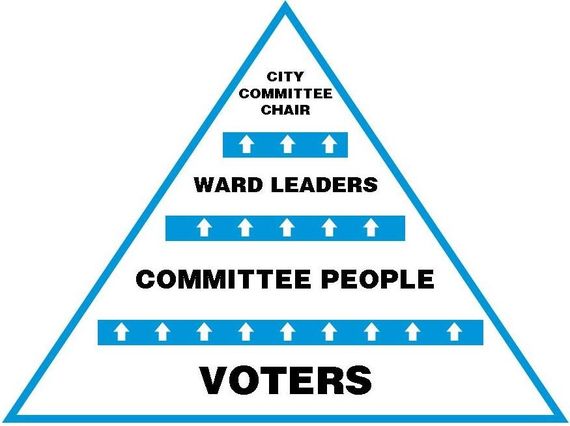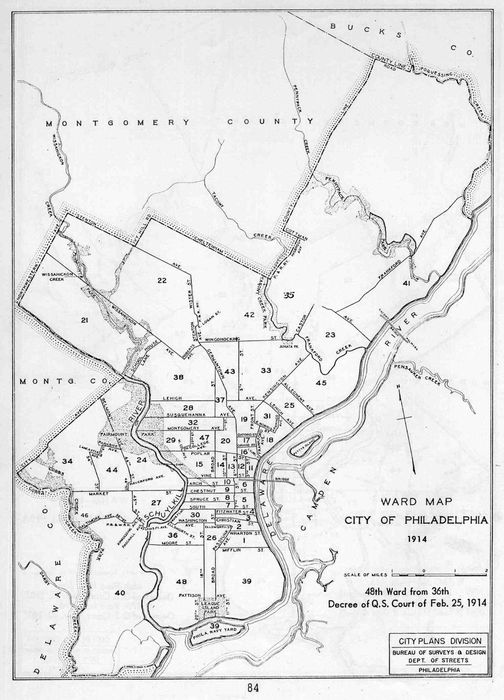Ward System 101
The ward system is an old and opaque part of Philadelphia history and politics but remains influential in city elections. In addition to the defined aspects below, we recommend getting up to speed with the following resources:
- "Ward Politics 101" from Young Involved Philadelphia
- "Ward System: How the city’s bizarro electoral system influences how you vote" from The Philadelphia Citizen
- "Civic Engagement Launchpad: Power, Politics and Civic Tech" from Code for Philly
- "Green Shoots of Democracy within the Philadelphia Democratic Party" by Karen Bojar
Divisions
Philadelphia is divided into 1,692 voting divisions (often called “precincts”), which are the smallest political units of the city. By law, each division is required to contain no fewer than 100 and no more than 1,200 registered voter. The division you live in determines where you vote on Election Day.
The Democratic and Republican Party organizations in Philadelphia start at a grassroots level with the office of committeeperson. Each division is represented by up to two Democratic and two Republican committeepeople who are elected by voters of the same party who live in the same division. Republican and Democratic committee people serve four year terms. Since 1965, Philadelphia has been divided into 66 wards, which are the second smallest units of the city. Wards usually have between 10 and 50 divisions.
Wards
Each ward is represented by a Republican and a Democratic ward leader, who are selected by their party's committee people soon after the committee people are elected. (In Philadelphia, wards 39, 40, and 66 are currently represented by two Democratic ward leaders and wards 39 and 40 by two Republican ward leaders, due to their size.) Ward leaders serve as members of their respective political party organization’s City Committee – sometimes called the County Committee – which supervises the organization and management of the party in all Philadelphia elections.
City Committee
The City Committee, a group of about 70 people if all positions are filled, supervises the full-time operations of the party office and also serves as the "voice of the party." The Chairs of the Democratic and Republican City Committees are elected by their respective party’s ward leaders. City Committees usually endorse candidates for elective office, fill vacancies when candidates nominated in the primary election are unable to run in the general election, and nominate candidates for special elections. The City Committees can make rules about the governing of the party as long as those rules don’t conflict with city or state law, or with the rules of their party’s statewide organization.
Other Political Parties
The two major political parties who follow the organizational structure outlined in this manual are the Democratic Party and the Republican Party. For more information about how to participate in activities of these or other established political parties see the “Resources” section on page 20.
State Committee Members
The Democratic and Republican parties operate similar committee structures at the state level to develop statewide party policy, coordinate the activities of political party organizations within the counties, and endorse statewide candidates for party nomination. Democratic and Republican candidates for state committee people will also be on the ballot during the May 2018 Primary Election. For more information about becoming a state committeeperson, please contact the state party offices.

